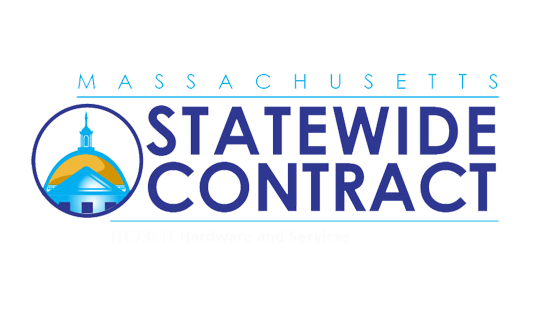BNMC Blog
Simple Guide to Successful IoT Deployment in Your Business Network
The Internet of Things (IoT) is transforming the way businesses operate by offering new opportunities for increased efficiency, innovation, and growth. As IoT devices become more prevalent, businesses can leverage their potential to streamline processes, reduce costs, and enhance customer experiences.
However, a successful IoT deployment requires careful planning, the right technology, and a solid strategy to ensure smooth integration into existing networks. Key considerations for a successful rollout include selecting the appropriate devices, ensuring network security, and addressing scalability and data management challenges. By partnering with IT Support Nashua experts, businesses can successfully deploy IoT systems in their network.
In this blog, we will explore the critical steps for a successful IoT deployment within your business network, helping you navigate the complexities of integrating IoT solutions for maximum impact.
What is IoT Deployment?
IoT deployment involves implementing Internet of Things technology within a network to achieve specific goals. It includes integrating devices and sensors to collect and analyze data while assessing infrastructure, selecting devices, ensuring security, and configuring data management systems.
Step-by-Step Guide to Successful IoT deployment
-
Identify Business Needs and Set Goals
Before starting an IoT deployment, businesses must identify their specific needs and establish clear goals for the project. This initial step is essential for laying the groundwork for a successful IoT implementation.
By understanding the challenges the business faces and defining what they want to achieve with IoT technology, organizations can streamline the deployment process and ensure that the solution aligns with their objectives. Setting measurable goals also allows businesses to track progress, evaluate the success of the deployment, and make informed decisions for future IoT initiatives.
-
Evaluate Network Infrastructure
Evaluating the network infrastructure is a critical step that cannot be overlooked when deploying an IoT system. Your IoT deployment's success heavily depends on your network's reliability and scalability. Begin by assessing your existing network capabilities to determine whether they can support the increased data traffic and connectivity demands of IoT devices.
Consider factors such as bandwidth, latency, security protocols, and potential points of failure. If necessary, make upgrades or invest in new networking solutions to ensure that your infrastructure can effectively meet the requirements of your IoT deployment.
-
Select the Right IoT Devices and Sensors
Selecting the proper IoT devices and sensors is an essential step for ensuring the success of your IoT deployment. When choosing IoT devices, consider factors such as compatibility with your existing systems, scalability, security features, and data collection capabilities.
Additionally, selecting sensors that accurately collect relevant data for your specific use case is key to deriving meaningful insights from your IoT deployment. Before making a decision, conduct thorough research on different device options, assess their technical specifications, and evaluate how well they align with your project requirements.
-
Develop a Security Strategy
Developing a strong security strategy is a crucial step for successfully deploying an IoT system. Security concerns are paramount in IoT implementations because a large amount of sensitive data is transmitted and stored. A comprehensive security strategy should include data encryption, authentication protocols, regular security updates, and access control mechanisms.
By proactively addressing potential security vulnerabilities, businesses can reduce risks and protect their IoT infrastructure from cyber threats. Collaborating with cybersecurity experts and staying updated on emerging security technologies is essential for creating an effective security strategy for IoT deployment.
-
Integrate IoT Devices with Existing Systems
Integrating IoT devices with existing systems is a vital step for ensuring a successful IoT deployment. By seamlessly incorporating new IoT devices into your current infrastructure, you can fully leverage the potential of these interconnected technologies.
To achieve this integration effectively, it is essential to thoroughly assess your current systems and identify potential connection points for IoT devices. Collaboration among IT teams, stakeholders, and IoT solution providers is key to developing a comprehensive integration strategy that aligns with the organization's goals and technical requirements.
-
Set Up Data Management and Analytics
Setting up effective data management and analytics is another critical step in successfully deploying IoT solutions. By implementing robust data management practices, businesses can ensure that the large volumes of data generated by IoT devices are collected, stored, and analyzed efficiently.
This allows organizations to gain valuable insights from the data, leading to informed decision-making and improved operational efficiency. Additionally, integrating advanced analytics tools enables businesses to identify patterns, trends, and anomalies within the data, facilitating predictive maintenance, real-time monitoring, and proactive interventions.
-
Deploy IoT Devices
After thorough planning and preparation, the deployment process is the next crucial step in successfully deploying IoT devices. This step involves physically installing and integrating the IoT devices into the designated environment. Following the manufacturer's installation guidelines ensures the devices function correctly and perform optimally.
Additionally, testing each device after deployment is vital to identify any issues or connectivity problems that may arise during the initial setup phase. Ensure that the devices are connected to the appropriate network and can communicate with each other seamlessly.
-
Monitor and Optimize Performance
Monitoring and optimizing performance is a key step to the successful deployment of an IoT system. By continuously tracking the performance metrics of your IoT devices and network, you can identify any potential issues or bottlenecks that may occur. This proactive approach allows you to address problems promptly and maintain the efficiency of your IoT system.
Furthermore, optimization efforts can enhance the overall performance of your IoT deployment, improving data processing speed, reducing latency, and enhancing the user experience. By implementing robust monitoring and optimization strategies, you can maximize the benefits of your IoT deployment services.
-
Train Employees and End Users
Training employees and end users is a critical step in ensuring the successful Internet of Things deployment . Proper training can help employees understand how to use IoT devices effectively, troubleshoot common issues, and ensure data security and privacy.
End users should also be educated on interacting with IoT devices safely and securely. Providing comprehensive training programs can minimize errors, increase efficiency, and maximize the benefits of IoT technology within an organization. If you want to enhance your IoT deployment services through employee and user training, contact the Managed IT Services Jacksonville team.
-
Continuous Maintenance and Improvement
Once your IoT system is successfully deployed, continuous maintenance and improvement are crucial for its long-term success. Regular maintenance allows you to identify and resolve issues, ensuring the system functions optimally.
Monitoring performance metrics and user feedback provides valuable insights for potential improvements. Additionally, keeping up-to-date with the latest technological advancements in the IoT field is essential to enhance your system's capabilities and security measures.
Final Thoughts
Successful IoT deployment requires careful planning and the right technology. By setting clear objectives, choosing suitable devices, ensuring security, and integrating systems, businesses can maximize IoT's potential for efficiency and growth. Continuous monitoring, employee training, and infrastructure optimization are key for long-term success. Following these steps helps navigate IoT complexities and leverage a connected, data-driven future.
Comments



